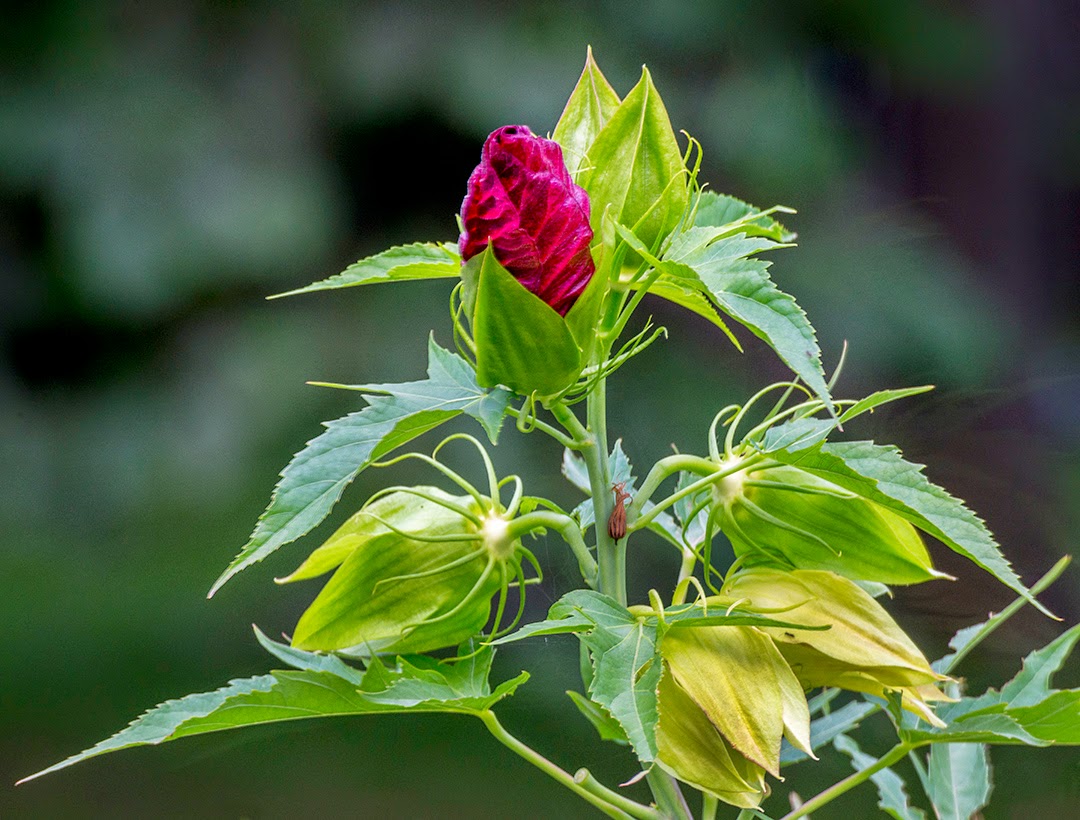Three By Ferida Wolff: Rose Hips and Acadia, Hibiscus Potential and Coneflower/Echinacea

Rose Hips and Acadia
I was walking along a path in Acadia National Park at Bar Harbor, Maine, enjoying being out in nature when I heard someone say, "Are those tomatoes?" I looked to where she was pointing and smiled.
She was referring to the rose hips, which are the seeds of roses. They are red and have a slightly flattened roundness that could be mistaken for hefty cherry tomatoes. They are abundant at this time of the season, ripening as autumn approaches.
Rose hips have a long history of usage, from birds and animals to humans. They are edible, though we humans cannot comfortably digest the seeds; they can be easily removed. They are rich in Vitamin C and other vitamins and antioxidants. Fall is a particularly good time to harvest them as they become sweeter after the first frost. They can be used topically to heal skin problems.
But I didn't let my focus on rose hips distract me from the splendor of Acadia. It is magnificent. The mountain views and seascapes are meditative. Many people, myself included, sat on the rocks just looking outward. Time seems irrelevant in such a setting. It is a place of renewal, something necessary in today's frenetic world. If you can't get to Acadia, take a few minutes in your day just to close your eyes and breathe deeply. It really makes a difference.
This is the official Acadia website but Google other sites as well for some additional great photos:
A brief review of rose hips with some recipes:
Editor's Note: We found these cautions, however: Don't use rose hips from plants that have been treated with a pesticide that is not labeled for use on edibles. About’ Home Cooking Guide advises not using aluminum pans or utensils that could discolor the hips. Aluminum also destroys their vitamin C. Stainless steel is fine.
In addition, we found a set of instructions from reliable sources about developing a plant from rose hips:
Growing and Enjoying Roses; The American Rose Society and Mississippi State University Extension Service
1. Remove seed from hips. Stratify seed in moisture in cooler before planting. One source said 4-5 weeks, another 4 months.

Hibiscus Potential
The hibiscus flowers have been delighting us all summer. They are big, exuberant, brilliant red blossoms that cause comments by anyone who comes to our house. One plant greets visitors at our front door with a gracious floral welcome that is so prominent, it cannot be ignored.
There are seasons for everything, however, and even as buds are still developing, many have already flowered and gone leaving behind the empty leaves that held their glory. There are no more buds forming this season but they were prolific and the promise of each was extraordinary.
Pages: 1 · 2
More Articles
- Ferida Wolff's Backyard: Spring is Coming
- Ferida Wolff Writes: Our Senses
- Ferida Wolff's Backyard: Corn Rows and Hurricane Ida
- The Autobiography of a Garden at The Huntington, a Joy for Viewers and Gardeners
- Ferida Wolff's Backyard: Caring for Our Climate and Our Earth; Inside and Outside; NASA's New Spacesuit for Artemis Generation Astronauts
- Ferida Wolff's Backyard: Swans and Duck Together; Life Ripens and Robin's Beautiful Eggs
- Ferida Wolff's Backyard: Nature's Progression and A Robin's Beautiful Eggs
- Ferida Wolff's Backyard Garden: My Surprising Garden and Basil is a Great Herb
- Ferida Wolff's Backyard: Tulips in a Vase or On the Tulip Tree and Snake Alert
- Ferida Wolff's Backyard: Rabbit in the Bush; Seasons and Changing Climate






